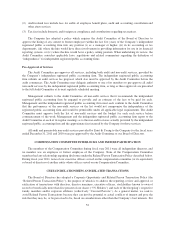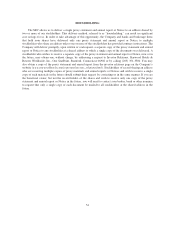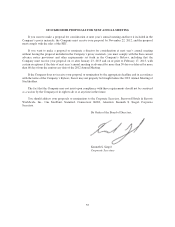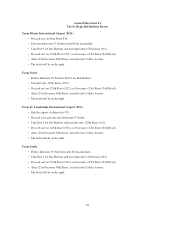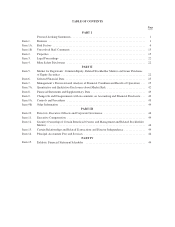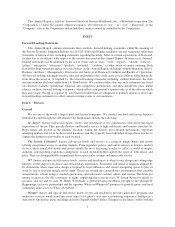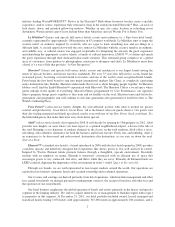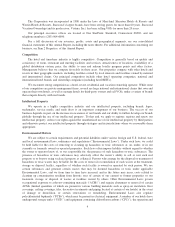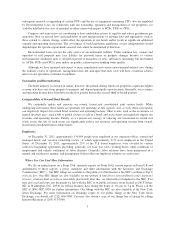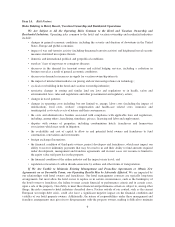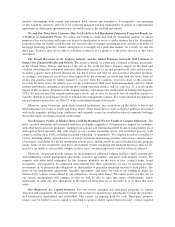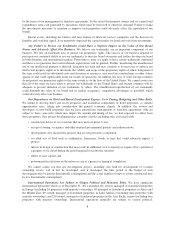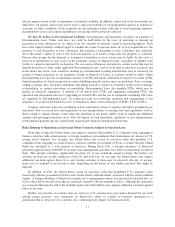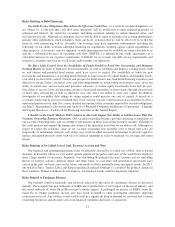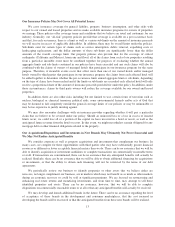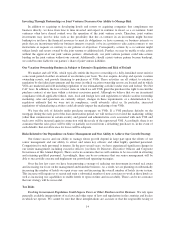Starwood 2011 Annual Report Download - page 72
Download and view the complete annual report
Please find page 72 of the 2011 Starwood annual report below. You can navigate through the pages in the report by either clicking on the pages listed below, or by using the keyword search tool below to find specific information within the annual report.The Corporation was incorporated in 1980 under the laws of Maryland. Sheraton Hotels & Resorts and
Westin Hotels & Resorts, Starwood’s largest brands, have been serving guests for more than 60 years. Starwood
Vacation Ownership (and its predecessor, Vistana, Inc.) has been selling VOIs for more than 20 years.
Our principal executive offices are located at One StarPoint, Stamford, Connecticut 06902, and our
telephone number is (203) 964-6000.
For a full discussion of our revenues, profits, assets and geographical segments, see our consolidated
financial statements of this Annual Report, including the notes thereto. For additional information concerning our
business, see Item 2 Properties, of this Annual Report.
Competition
The hotel and timeshare industry is highly competitive. Competition is generally based on quality and
consistency of room, restaurant and meeting facilities and services, attractiveness of locations, availability of a
global distribution system, price, the ability to earn and redeem loyalty program points and other factors.
Management believes that we compete favorably in these areas. Our properties compete with other hotels and
resorts in their geographic markets, including facilities owned by local interests and facilities owned by national
and international chains. Our principal competitors include other hotel operating companies, national and
international hotel brands, and ownership companies (including hotel REITs).
We encounter strong competition as a hotel, resort, residential and vacation ownership operator. While some
of our competitors are private management firms, several are large national and international chains that own and
operate their own hotels, as well as manage hotels for third-party owners and sell VOIs, under a variety of brands
that compete directly with our brands.
Intellectual Property
We operate in a highly competitive industry and our intellectual property, including brands, logos,
trademarks, service marks, and trade dress is an important component of our business. The success of our
business depends, in part, on the increase in awareness of our brands and our ability to further develop our brands
globally through the use of our intellectual property. To that end, we apply to register, register and renew our
intellectual property, enforce our rights against the unauthorized use of our intellectual property by third parties;
and otherwise protect our intellectual property through strategies and in jurisdictions where we reasonably deem
appropriate.
Environmental Matters
We are subject to certain requirements and potential liabilities under various foreign and U.S. federal, state
and local environmental laws, ordinances and regulations (“Environmental Laws”). Under such laws, we could
be held liable for the costs of removing or cleaning up hazardous or toxic substances at, on, under, or in our
currently or formerly owned or operated properties. Such laws often impose liability without regard to whether
the owner or operator knew of, or was responsible for, the presence of such hazardous or toxic substances. The
presence of hazardous or toxic substances may adversely affect the owner’s ability to sell or rent such real
property or to borrow using such real property as collateral. Persons who arrange for the disposal or treatment of
hazardous or toxic wastes may be liable for the costs of removal or remediation of such wastes at the treatment,
storage or disposal facility, regardless of whether such facility is owned or operated by such person. We use
certain substances and generate certain wastes that may be deemed hazardous or toxic under applicable
Environmental Laws, and we from time to time have incurred, and in the future may incur, costs related to
cleaning up contamination resulting from historic uses of certain of our current or former properties or our
treatment, storage or disposal of wastes at facilities owned by others. Other Environmental Laws govern
occupational exposure to asbestos-containing materials (“ACMs”) and require abatement or removal of certain
ACMs (limited quantities of which are present in various building materials such as spray-on insulation, floor
coverings, ceiling coverings, tiles, decorative treatments and piping located at certain of our hotels) in the event
of damage or demolition, or certain renovations or remodeling. Environmental Laws also regulate
polychlorinated biphenyls (“PCBs”), which may be present in electrical equipment. A number of our hotels have
underground storage tanks (“USTs”) and equipment containing chlorofluorocarbons (“CFCs”); the operation and
4


